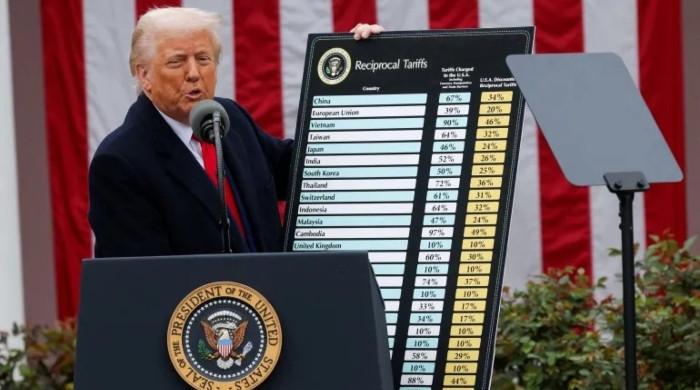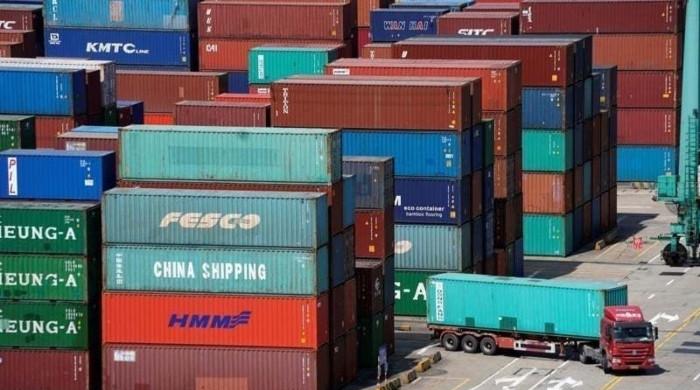Banking 2017: the walk towards extinction
The reality is that our banks have not innovated a single product since the earth cooled
September 27, 2017
Banks in Pakistan can be likened to the dinosaurs which roamed our world during ancient times. They were large, unwieldy and comfortable in the mindset that their world will never change. Banks do not realise that the perfect tech storm is forming to make them extinct – or at least marginal in the near future. Banks in the country are highly profitable and the CEOs of commercial banks are the highest-paid professionals across different industries.
The reality is that our banks have not innovated a single product since the earth cooled. Banks are highly profitable. This is not because they cater to a large customer base, are efficient or have a unique network. Banks have a good thing going for them.
Our narrow tax base leads to an imbalance between our government’s revenue and expenses. The government’s insatiable desire for expenses is actually funded through their national savings programme and two debt instruments: treasury bills and the Pakistan Investment Bonds (PIB). Banks have over 70 percent of their investable funds in these instruments instead of lending to actual customers.
The central bank facilitates this borrowing by providing banks with a Repo facility. The State Bank essentially allows banks to borrow money against their existing holding of treasury bills and PIBs. Through this mechanism, banks are able to invest in risk-free instruments, which results in lazy lending. This has resulted in the overall lending stock of small and medium-sized enterprises to fall to single digits from 17 percent, a marginal increase in consumer lending and little innovation. The senior management at banks gets hefty bonuses, the board facilitates this process and the shareholders are happy because of the dividends that the banks pay. The customers suffer but nobody cares.
However, the world is changing. A tech storm has started that will eventually reduce this gravy train unless the banks wake up to the new reality. Fintec’s companies are starting to unbundle what commercial banks do. Fintec includes financial technology companies, which look at one or more businesses that banks do and then develop an easier and more efficient solution for the same service. They don’t have large overheads or require a brick and mortar presence. As a result, they have a price advantage as well. From 2017 onwards, the phenomenon, which has spread across the globe, will be coming to Pakistan.
We have the existing railroads that are required for this – broadband coverage, smartphone density and social media usage. Fintec uses existing railroads to enable their customers. Banks provide six essential services to their individual customer base: lending, savings, payments, insurance, investments and information.
The unbundling of the commercial banks will start with the lending service. In 2017, at least two Pakistan-based Fintec companies will launch a nano credit service that will use data on smartphones to grant a loan of up to Rs10,000 within a minute.
Imagine the disruption. There are currently 40 million smartphone users in Pakistan and this number is expected to increase to 60 million by 2020. It is expected that by 2020, there will 10 million nano credit customers in Pakistan. This exceeds the less than two million-strong active customer base that the commercial banking industry has been able to muster in 20 years.
Powerful learning algorithms will examine the existing data points on an applicant’s phone. Specific data – like how long the phone is turned on in 24 hours, the number of people in a applicants contact list, the travel pattern of the applicant and the likes on their social feed – will be gathered. These data points will be used as proxies for traditional credit data such as salary slips. The algo is a learning tool. It constantly improves itself based on good and bad customer history.
The approved loan is provided immediately to a mobile wallet and withdrawn through a branchless banking agent, thereby bypassing the entire conventional banking chain. Commercial banks, like telephone companies, are sitting on data that allows them to use more powerful proxies than Fintec.
While the telecom sector will eventually benefit from this goldmine of data, it seems unlikely that banks will mine the transaction data that they are sitting on. Commercial banks could easily use the information gathered on their point-of-sale machines to lend to small traders. But they refrain from doing so. The big data, small credit solution has already been used successfully in African countries and will now start in Pakistan.
In the second phase, once the default rate has become single-digit due to the learning algo, Fintec will fund this asset through crowd-funding. The primary business model of a commercial bank is to take deposits and lend money. The difference between the deposit rate and lending rate is where banks make money. In crowd-funding, the borrower – in this case Fintec – will fund its nano credit lending portfolio directly from the public instead of borrowing from commercial banks. Crowd-funding, therefore, bypasses the conventional bank-funding role. Imagine: an increasing number of people using smartphones due to an increase in broadband coverage and speed. Imagine: smartphone prices falling below Rs5,000. Imagine: an increasing number of people becoming familiar with using phone applications. Imagine: customers shifting from savings with commercial banks to crowd-funding.
The net result of this unbundling will mark the beginning of the marginalisation of the two main functions a commercial bank provides: lending and saving. In 2017, this only have a marginal effect. However, the seed for the extinction of the dinosaurs would have been sown. It is now only a matter of time before the seed transform into a mighty oak.
The writer is the founder and coach at Planet N.
Twitter:@nadeemtameer
This was originally published in The News
Originally published in The News











